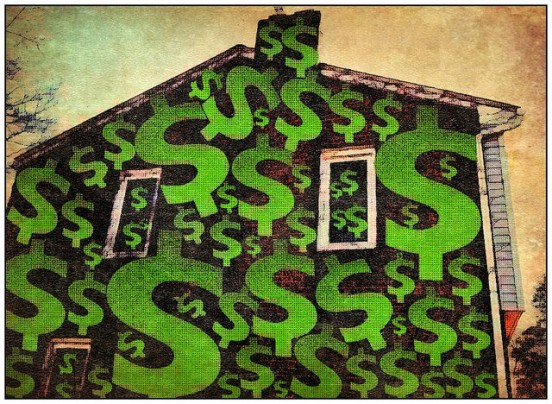Most Americans view homeownership as an achievement and feel now is a good time to buy, according to a new survey conducted on behalf of Wells Fargo. But, despite this, there are several misconceptions about the home buying process that are holding potential buyers back. The survey, titled “How America Views Homeownership,” found that, though 74 percent of respondents said they understand the financial process involved with buying a home, many of their responses indicated otherwise. For example, 30 percent of participants believed that only people with high incomes can get a mortgage and 64 percent said that having a “very good” credit score was a requirement. Nearly half of respondents said they knew very little or nothing about closing costs and just as many said they didn’t feel there were homes available that would fit their budget. Another common misconception was that a 20 percent down payment was required in order to buy a house – despite the fact that there are available financing options that don’t require 20 percent down. Overall, the survey revealed that many potential home buyers aren’t entering the market based on easily corrected misconceptions about the buying process. Informing potential buyers about their options is the key to helping more Americans realize their goal of one day owning a home. More here.
Archive for October 2014
Mortgage Rates Fall For 2nd Straight Week
According to the Mortgage Bankers Association’s Weekly Applications Survey, average mortgage rates fell last week. It was the second consecutive week rates declined. The drop affected all loan categories, including 30-year fixed-rate loans with both conforming and jumbo balances, loans backed by the Federal Housing Administration, and 15-year fixed-rate loans. It also boosted demand for mortgage applications. The Market Composite Index – which measures total refinance and purchase loan demand – was up nearly 4 percent from the previous week. Refinance activity rose 5 percent and demand for loans to buy homes rose 2 percent, reaching the highest level since early July. The turnaround is welcome news and joins other recent housing and economic data suggesting an upward trend emerging this fall. The MBA’s weekly survey has been conducted since 1990 and covers 75 percent of all retail residential mortgage applications. More here.
Buyers And Sellers Say Now Is The Time
Nearly 70 percent of Americans say now is a good time to buy a house, according to the results of Fannie Mae’s most recent National Housing Survey. The number of respondents who feel it’s the time to buy increased 4 percent from the month before and was one of many indicators showing positive progress from previous months. Doug Duncan, Fannie Mae’s senior vice president and chief economist, said September’s results show a slight recovery in consumer housing sentiment after a two-month setback. Duncan believes this return to upward trending housing sentiment, combined with positive news on the jobs front, suggests a broad-based housing recovery is on track to resume in 2015. And, though there will likely still be some volatility in the market, Americans are generally feeling more optimistic about the economy and it’s beginning to influence their views on buying and selling homes. In fact, the number of participants who said now was a good time to sell a house also increased in September, reaching 39 percent of respondents. In addition, a growing number of participants said they feel the economy is on the right track and that they would prefer to buy, rather than rent, if they were going to move. More here.
The Return Of The First-Time Home Buyer
There has been a lot of discussion recently about Millennials – young adults between the ages of 18 and 34 – and when they will begin forming households of their own. For the past few years, the number of first-time home buyers active in the market has been lower than the historical average and many experts believe this is the final piece holding back the housing market’s recovery. As these young Americans become homeowners, residential real estate will become more stable and balanced, reducing the volatility now seen in the month-to-month fluctuations of the market. Jonathan Smoke, Realtor.com’s chief economist, said Millennials are a critical component of the first-time home buyer market and getting that segment of the market functioning again is a necessity for bringing the housing ecosystem back to full health. And, according to new data from Realtor.com, there is growing reason for optimism. In fact, the most recent National Housing Trend Report found that half of all Millennials viewed real estate websites in the last month, indicating high levels of demand. And though tight inventory, rising prices, and saving for a down payment can be a hurdle for young home buyers, many local markets offer affordable opportunities for first-time buyers. More here.
How Owning A Home Builds Net Worth
There are many benefits to owning your own home and, according to the Federal Reserve’s Survey of Consumer Finances, one of the biggest benefits is financial. Over the past 15 years, for example, the net worth of the typical homeowner has been between 31 and 46 times greater than the net worth of the typical renter. In fact, the median homeowner had nearly $200,000 in net worth, while the median renter had just over $5,000. A homeowner’s wealth is built primarily from building equity. Equity, which refers to the value of a mortgaged property minus the amount owed, is accumulated through paying the principal portion of your monthly mortgage payment and also through any increase in the home’s value over time. As a homeowner pays their mortgage, they own an increasing percentage of their home’s total worth, which in turn increases their own net worth. And, even though homeowner equity is closely tied to home values, homeowners’ net worth still dwarfed that of renters even following the housing crash, when home prices plummeted. In fact, homeowner net worth was 34 times that of the typical renter’s in 2010, despite the housing market’s struggles. More here.
Housing Inches Its Way Back To Normal
To get an accurate view of the housing market’s recovery, it’s important to look at a number of factors. No one report or statistic alone can provide a true picture of the health of the market. Trulia’s Housing Barometer – which tracks how quickly the market has been returning to normal following the housing crash and financial crisis – looks at current home prices, sales, delinquency and foreclosure rates, new construction starts, and the job market to offer a comprehensive view of the residential real-estate market. According to the most recent reading, all but two of the five categories tracked by the Barometer have improved over the past year. Unfortunately, the two measures that are lagging behind are new home construction and employment among young adults. Both of these are closely tied to the broader economy and play a large role in the continuing health of the market. Home prices, sales, and the foreclosure rate have all rebounded relatively quickly over the past couple years. But, now that they have returned to near normal levels, the economy and housing market require further improvement in the job market and new residential construction to spur continued gains and further stabilization. More here.
Mortgage Rate Drop Doesn’t Spur Demand
According to the Mortgage Bankers Association’s Weekly Applications Survey, mortgage rates fell last week across all loan categories, including 30-year fixed-rate mortgages with both conforming and jumbo balances, loans backed by the Federal Housing Administration, and 15-year fixed-rate loans. The decrease was the first in three weeks. After hitting a 14-month low the first week in September, mortgage rates had been on the rise until last week’s dip. But despite the decline, demand for loan applications was relatively flat from the week before. In fact, the Market Composite Index – which measures both refinance and purchase demand – was down just 0.2 percent. The refinance index slipped 0.3 percent and the purchase index was unchanged from the previous week. The seasonally adjusted conventional purchase index, on the other hand, increased 1.3 percent and reached its highest level since July. The MBA’s weekly survey has been conducted since 1990 and covers 75 percent of all retail residential mortgage applications. More here.







